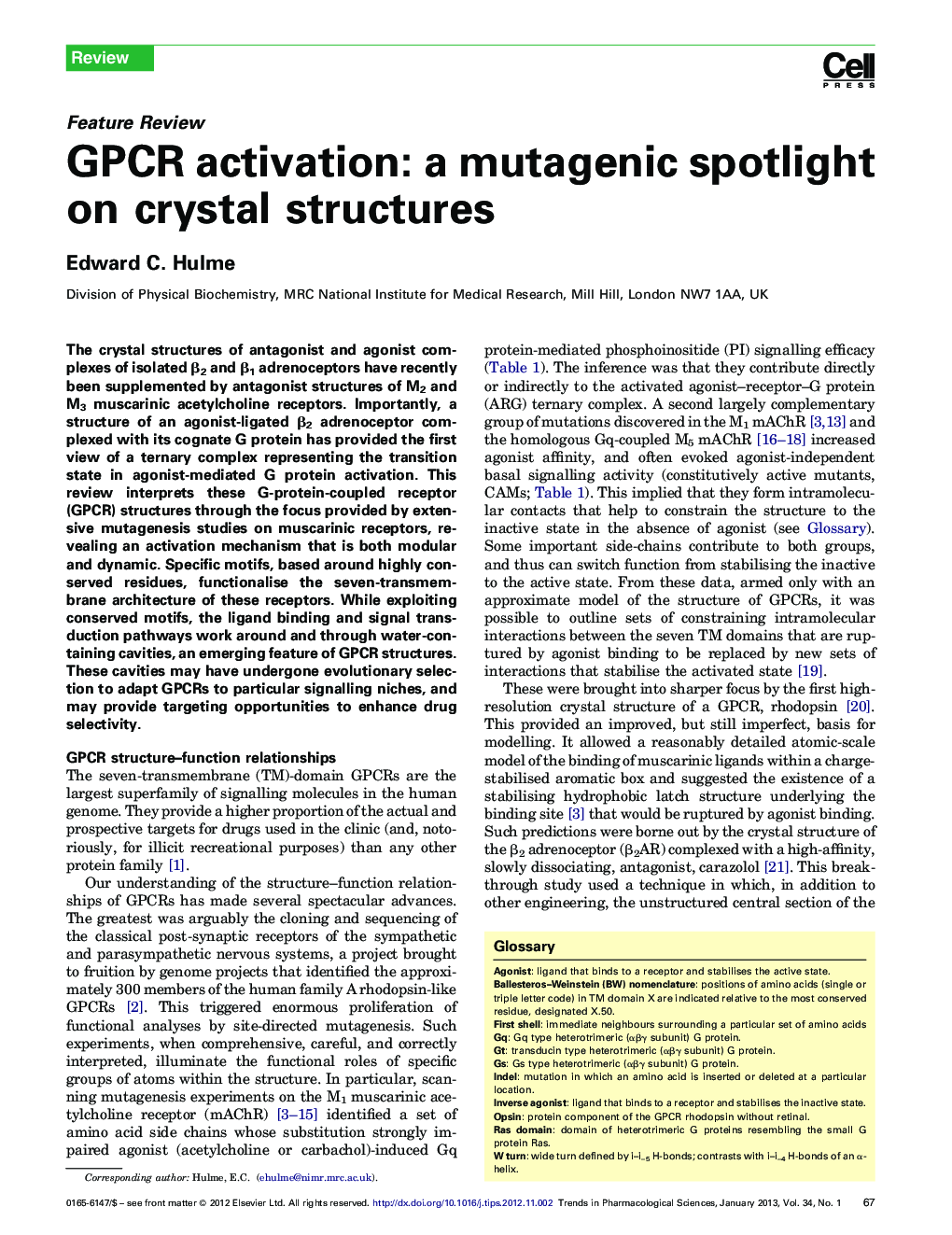| Article ID | Journal | Published Year | Pages | File Type |
|---|---|---|---|---|
| 2572803 | Trends in Pharmacological Sciences | 2013 | 18 Pages |
The crystal structures of antagonist and agonist complexes of isolated β2 and β1 adrenoceptors have recently been supplemented by antagonist structures of M2 and M3 muscarinic acetylcholine receptors. Importantly, a structure of an agonist-ligated β2 adrenoceptor complexed with its cognate G protein has provided the first view of a ternary complex representing the transition state in agonist-mediated G protein activation. This review interprets these G-protein-coupled receptor (GPCR) structures through the focus provided by extensive mutagenesis studies on muscarinic receptors, revealing an activation mechanism that is both modular and dynamic. Specific motifs, based around highly conserved residues, functionalise the seven-transmembrane architecture of these receptors. While exploiting conserved motifs, the ligand binding and signal transduction pathways work around and through water-containing cavities, an emerging feature of GPCR structures. These cavities may have undergone evolutionary selection to adapt GPCRs to particular signalling niches, and may provide targeting opportunities to enhance drug selectivity.
